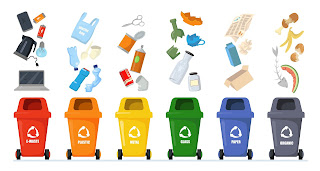Creative Upcycling: Breathing New Life Into Old Things
In an era where environmental concerns are growing louder and landfills are filling up faster than ever, creative solutions are not just welcomed—they’re essential. One such solution gaining popularity across the globe is creative upcycling. More than a trend, it’s a powerful movement that turns what many consider “waste” into works of art, functional items, or entirely new products. By merging sustainability with imagination, creative upcycling offers a fresh perspective on consumption and waste.
Understanding Creative Upcycling
Creative upcycling involves taking old, unused, or discarded items and turning them into something of greater value or function. Unlike recycling, which typically breaks down materials to create new ones (often requiring industrial processing), upcycling focuses on direct transformation. This approach saves energy, reduces pollution, and extends the lifecycle of materials in their current form.
The beauty of creative upcycling lies in its flexibility and accessibility. Anyone, from school kids to professional designers, can take part using everyday materials—clothes, cans, wood scraps, glass jars, and more.
Everyday Items, Extraordinary Ideas
What makes creative upcycling so exciting is how it opens up possibilities from seemingly useless things. Some inspiring examples include:
-
Old Suitcases into Chairs: Vintage luggage can be padded and mounted onto wooden legs to create quirky seating options.
-
Books into Shelves: Outdated hardcovers can be transformed into floating wall shelves, blending function with literary charm.
-
Bicycle Wheels into Wall Clocks: Add hands and a motor to a discarded wheel for a rustic, industrial-style timepiece.
-
Sweaters into Mittens: Worn-out wool sweaters can be cut and sewn into cozy, handmade mittens or beanies.
-
CDs as Mosaic Art: Broken or obsolete CDs can be cut into pieces and arranged as shimmering art panels or mirror frames.
These examples show that creative upcycling is limited only by one’s imagination. And each project keeps waste out of landfills and reduces the need to buy new items.
Why It Matters
The impact of creative upcycling goes far beyond individual DIY projects. It plays a vital role in environmental sustainability by:
-
Reducing landfill waste: Keeping materials out of landfills lessens methane emissions and space use.
-
Conserving resources: It reduces the demand for raw materials and energy consumption involved in manufacturing new products.
-
Promoting mindful consumption: Upcycling encourages people to think before discarding items, fostering a culture of reuse.
It also builds stronger community engagement. Neighborhood workshops, art exhibits, and eco-fairs often feature upcycling as a core theme, bringing people together with a shared purpose.
Creative Upcycling in Business
While upcycling started as a grassroots movement, businesses are increasingly getting involved. From eco-conscious fashion brands to furniture companies, creative upcycling is becoming a part of the supply chain. It's not only an environmental choice but also a branding opportunity—consumers are drawn to sustainability stories and innovative practices.
One standout example is SwagCycle, a company that works with businesses to manage surplus branded merchandise. Instead of sending excess items like T-shirts, water bottles, or hats to waste, SwagCycle helps upcycle or redistribute them responsibly. By offering smart, sustainable solutions for unused promotional products, SwagCycle helps companies align with environmental values while protecting brand reputation.
In essence, creative upcycling blends sustainability with style, waste reduction with innovation. It empowers individuals and organizations to look at waste differently—not as an end, but as a new beginning. With visionary brands like SwagCycle leading the way, the future of upcycling looks not only promising but essential for a greener planet.




Comments
Post a Comment